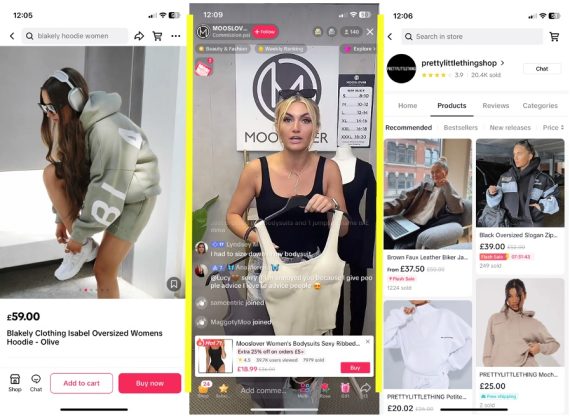TikTok is retiring the original Storefront shopping feature on September 12 in a bid to move merchants to TikTok Shop.
TikTok Shop is live in the U.S., the U.K., Singapore, Thailand, the Philippines, Indonesia, Vietnam, and Malaysia. It launched in the U.S. in November 2022 with several hundred retailers. However, research company Insider Intelligence reported a decline in usage in April when it claimed there were less than 100 registered U.S. sellers on the platform.
Storefront allowed merchants to sync their product inventory to a catalog page on the platform or manually add products that linked customers back to their ecommerce site. As of September 12, these original integrations with ecommerce platforms such as Shopify, BigCommerce, and Square can longer connect. The Storefront tab will disappear from profiles, and ads using the Storefront feature will no longer run.
In-app Buying
Merchants must then use TikTok Shop to sell on the platform. Unlike Storefront, TikTok Shop is a full in-app browsing and buying experience. Customers complete orders on the app without redirecting to an external site. Consumers can engage with Shop in three ways: Live Shopping videos, in-feed TikToks, and the Product Showcase on a TikTok profile. Products appear via pins on content or by tapping the shopping basket icon.

Options for merchants to sell on TikTok Shop include product pages (at left), live-streams (middle), and branded store pages (right). Click image to enlarge.
TikTok claims this in-app experience boosts conversion rates for merchants, who pay a commission on each Shop order. Fees vary by region but tend to be around 5% after introductory offers, making the platform cheaper than Amazon and roughly equivalent to Instagram Shopping.
Shopify has already announced an integration with TikTok Shop, populating product data and syncing order details back to Shopify. Meanwhile, developers CedCommerce launched a connector linking several ecommerce platforms to the new feature.
According to the Financial Times, the in-app experience has proved lucrative for Douyin, TikTok’s sister brand in China, with a tripling of sales year on year. Insider Intelligence reports U.S. consumers spent upwards of $4 million a day on TikTok Shop in July, up from $1 million in June. TechCrunch reports that daily sales in Southeast Asia exceed $50 million.
Brands and individuals can set up a seller account on TikTok Shop. There are no follower restrictions; a new account without followers is eligible. Requirements are a TikTok account, photo identification for individuals, and business info for brands, such as a certificate of incorporation.
Categories
Popular categories include clothing, beauty and skincare, home decor, arts and crafts, and tech accessories. Prohibited products include age-restricted items, adult products, power tools, fireworks, and piercing and tattooing supplies, among other categories. There are also restricted categories requiring approval, unsupported categories, and invite-only categories, which include food and supplements, jewelry and watches, and used goods.





